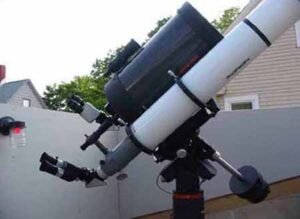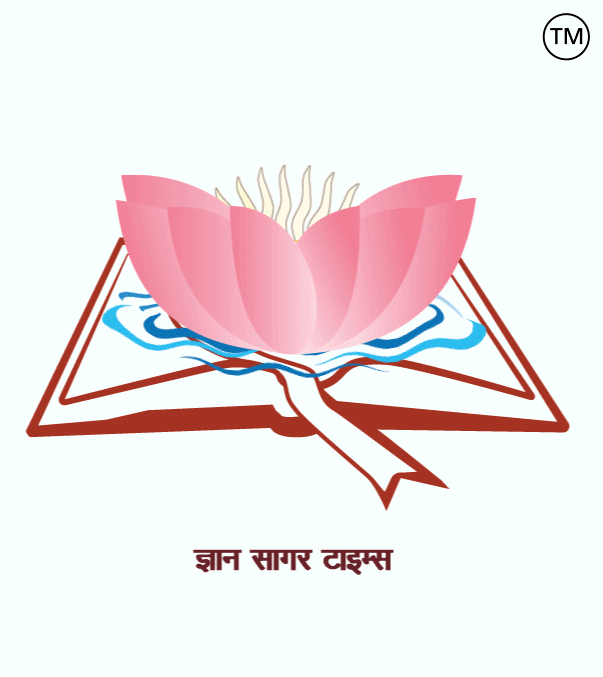
प्रकाशीय यंत्र(Optical instrument) दो प्रकार के होते है.
प्रतिबिंब आधारित यंत्र (Image based instrument):- इन यंत्रों की सहायता से हम वस्तुओं को आवर्धित रूप में देख सकते है, तथा किसी सूक्ष्म संरचना का अध्ययन भी कर सकते है, जैसे:- सूक्ष्मदर्शी(Microscope) , दूरदर्शी(Telescope). इन यंत्रों के प्रमुख अवयव लेंस एवं दर्पण होते है.
विश्लेषण आधारित यंत्र (Analysis based instrument):- इन यंत्रों की सहायता से वस्तुओं के प्रकाशीय गुण एवं प्रकाश की प्रकृति का अध्ययन कर सकते है,जैसे:-वर्णक्रममापी(spectrometer), व्यतिकरणमापी(Interference meter). इन यंत्रों के प्रमुख अवयव प्रिज्म(Prism), ग्रेटिंग(Grating) या दर्पण(Mirror) होता है.
सूक्ष्मदर्शी (Microscope):- वह यंत्र जो सूक्ष्म वस्तुओं का बड़ा प्रतिबिम्ब बनाते हैं उसे सूक्ष्मदर्शी कहते हैं. ये दो प्रकार के होते हैं.
- सरल सूक्ष्मदर्शी (Simple microscope):- यह एक कम फ़ोकस दुरी का उत्तल लेंस (convex lens) होता है, जिसे आम बोलचाल की भाषा में बिल्लोरी कांच भी कहते हैं, इससे हमसभी बचपन में कार्बन जलाया करते थे.
- सिद्धांत(theory):- उक्त कम फ़ोकस दुरी के उत्तल लेंस (convex lens) के फोकस और प्रकाश केंद्र के बीच यदि किसी वस्तु को रख दिया जाय तो लेंस द्वारा उसका सीधा, आभासी (Virtual) एवं बड़ा प्रतिबिम्ब(Reflection) वस्तु की ओर बनता है. इसे सूक्ष्मदर्शी का उपयोग आवर्धित प्रतिबिम्ब(Magnified image) प्राप्त करने में किया जाता है.
संयुक्त सूक्ष्मदर्शी (Compound microscope):- दो लेंसों के संयोग से बना होता है, जो लेंस वस्तु की ओर होता है उसे अभिदृश्यक(Requisite) लेंस कहते है, इसकी फोकस दुरी अपेक्षाकृत कम होती है. जो लेंस आँख की ओर होता है या यूँ कहे जिस आँख से हम देखते है उसे नेत्रिका लेंस(eyepiece lens) कहते हैं. इसकी फोकस दूरी अपेक्षाकृत अधिक होती है. इसमें दो प्रतिबिम्ब बनते है, वस्तु का पहला प्रतिबिम्ब(Reflection) अभिदृश्यक(Requisite) लेंस के द्वारा सूक्ष्मदर्शी के अंदर ही बन जाता है, इस कारण यह हमें दिखाई नहीं देता है, परंतु यह प्रतिबिम्ब नेत्रिका लेंस (Lenticular lens) के लिए वस्तु का कार्य करता है और नेत्रिका लेंस (eyepiece lens) इसका आवर्धित (Magnified) प्रतिबिम्ब बनाती है, जो हमें दिखाई देता है तथा, जिसे अंतिम प्रतिबिम्ब (Reflection) भी कहते है. इस सूक्ष्मदर्शी में अभिदृश्यक लेंस (Adoption lens) और नेत्रिका लेंस(eyepiece lens), दोनों लेंसों को अलग-अलग रूप से दंड चक्रीय (Fine cyclical) व्यवस्था के द्वारा एक सीमा तक आगे पीछे चलाया जा सकता है. ये दोनों लेंस एक नली के सिरों पर जुड़े होते है तथा यह नली एक स्टैंड पर कसी होती है.इसे संयुक्त सूक्ष्मदर्शी(Composite microscope) कहते है.
इलेक्ट्रॉन सूक्ष्मदर्शी :- यह सूक्ष्मदर्शी अति सूक्ष्म वस्तु का एक लाख गुना बड़ा प्रतिबिंब(Reflection) बनाती है.
दूरदर्शी या दूरबीन(Binoculars):- इस यंत्र का उपयोग दूर स्थित वस्तुओं को स्पष्ट रूप से देखने के लिए किया जाता है इसे दूरबीन या दूरदर्शी भी कहते है. ये मुख्यतः चार प्रकार की होते हैं.
(1) खगोलीय दूरदर्शी (Celestial telescope)
(2) पार्थिव दूरदर्शी (Terrestrial visionary)
(3) गैलीलियो दूरदर्शी (Galileo Visionary)
(4) परावर्तक दूरदर्शी (Reflective visionary)
=========== =========== ===========
Related to Physics– 209.
Optical instrument

There are two types of optical instruments.
Image-based instrument:- With the help of these instruments, we can see objects in magnified form, and can also study any microscopic structure, such as a microscope, or telescope. The main components of these instruments are the lens and mirror.
Analysis-based instrument:- With the help of these instruments, the optical properties of objects and the nature of light can be studied, such as:- Spectrometer, Interference meter. The main components of these instruments are prism, grating, or mirror.
Microscope:- The instrument which makes a large image of microscopic objects is called a microscope. These are of two types.
- Simple microscope: – This is a convex lens of short focus distance, which is also known colloquially as a billy glass, with which we all used to burn carbon in our childhood.
- Theory: – If an object is placed between the focus and the center of light of a convex lens of short focal length, then its direct, virtual, and magnified image is formed by the lens towards the object. is made. This microscope is used to obtain a magnified image.
Compound microscope: – It is made of a combination of two lenses, The lens which is towards the object is called the Requisite lens, and its focus distance is relatively less. The lens which is towards the eye or simply say the eye through which we see is called the eyepiece lens. Its focus distance is relatively longer. Two images are formed in this, The first reflection of the object is formed inside the microscope by the Requisite lens, due to which it is not visible to us, but this image is of the object for the lenticular lens. works and the eyepiece lens makes its magnified image, which is visible to us and is also called the final image. Adoption lens and eyepiece lens in this microscope, both the lenses can be moved back and forth separately to a certain extent by fine cyclic arrangement. Both these lenses are connected at the ends of a tube and this tube is fixed on a stand. This is called a composite microscope.
Electron Microscope: – This microscope makes a million times larger reflection of a microscopic object.
Binoculars: – This instrument is used to see distant objects clearly, it is also called binoculars or telescopes. There are mainly of four main types.
(1) Celestial telescope
(2) Terrestrial visionary
(3) Galileo Visionary
(4) Reflective visionary





